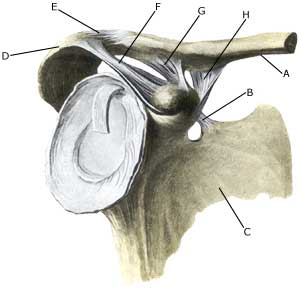LUXATION OF THE JOINT BETWEEN THE SHOULDER BLADE AND THE COLLARBONE
|
||
|
||
| Cause: The ligaments between the shoulder blade’s upper bone projection (acromion) and the collarbone can be damaged if they are subjected to a violent load, such as a fall on an outstretched arm. In light cases a sprain with stretching of the ligaments occurs (distorsio). In severe cases a partial luxation (subluxatio) occurs with rupture of some of the ligaments holding the collarbone in place. The collarbone can then move slightly in relation to the acromion. In the most severe cases a total luxation with the rupture of all ligaments occurs, so that the collarbone no longer has contact with the acromion (luxatio).
Symptoms: Pain in the outermost part of the collarbone and upon movement in the shoulder joint. In cases of total luxation the collarbone is so loose that it may be prominent under the skin. Acute treatment: Click here. Examination: In cases of total luxation the diagnosis is easily made with an ordinary clinical examination. In cases of partial luxation (subluxatio) the doctor may administer local anaesthesia in the joint between the upper bone projection of the shoulder blade (acromion) and the collarbone. If the athlete becomes pain-free during the local anaesthesia, it is certain that the pain is from the AC joint (diagnostic blockade). The degree of looseness in the joint can be evaluated by means of an ultrasound scan (or X-ray), while the joint is under load (Ultrasonic image). Treatment: Most would advise a short-term relief treatment and thereafter fitness training of shoulder muscles within the pain threshold. Some recommend surgery, but the results are not convincing (article-1) (article-2). It is not uncommon, that athletes with heavy loading of the arm above the level of the head (pitchers, weightlifters, racket games) will have long-term discomfort, stretching over many months. Complications: After (partial)luxation in the joint between the upper bone projection of the shoulder blade and the collarbone, osteoarthrosis changes often occur in the joint. An attempt can be made to treat these with rheumatic medicine (NSAID) or an injection of corticosteroid. In case of insufficient effect or continuing inconvenience, the outer part of the collarbone can be surgically removed. |

